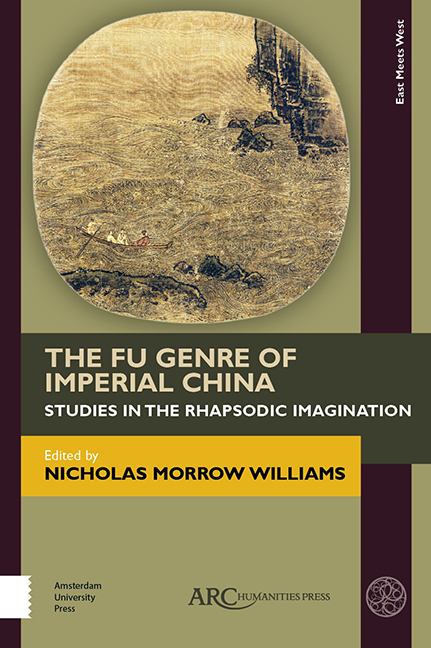2 - The Origins of the Term “Fu” as a Literary Genre of Recitation
Published online by Cambridge University Press: 20 November 2020
Summary
ONE OF THE most important and thorniest theoretical issues in the field of fu studies is the original meaning of the term fu when it refers to a literary genre. Consider, for instance, the prologue to Mi Heng's 禰衡 (ca. 173– 198) “Parrot” 鸚鵡賦, where the local governor Huang Yi 黃射 makes a request of Mi Heng:
Retired scholar Mi, today I have nothing with which to entertain our guests. However, I believe that this bird from afar, intelligent and bright, is a creature worth prizing among the feathered species. I hope that you would compose a rhapsody on it (wei zhi fu) so that all our guests might share in this magnificent sight. Would this not be delightful?
禰處士, 今日無用娛賓, 竊以此鳥自遠而至, 明慧聰善, 羽族之可貴, 願先生 為之賦,使四坐咸共榮觀,不亦可乎?
There follows the main text of the poem, devoted entirely to describing the parrot as a symbol of the subjugated courtier, forced to perform on demand for his masters. Many fu from the Han dynasty have similar openings where somebody explains the intention to compose a rhapsody before proceeding to the text of the poem itself. The introduction presents us with a context for the fu, typically that of a court setting, where the poet is requested to make a performance. Thus the preface gives us a framework for understanding the fu, except that it does not tell us directly what is intended by that key term of fu itself. This turns out to be a more complicated question than it appears at first.
In the past two decades, many scholars have attempted to explain the meaning of the term fu from various perspectives. Some insist that fu means “to display or to enumerate,” while others point out that the word denotes “to recite” when it is connected to poetry. More recently, other scholars have broached further speculations. Why was a piece of literary writing called a fu in Han times or even in as early as the pre-Qin period? Where did the generic name fu come from?
- Type
- Chapter
- Information
- The Fu Genre of Imperial ChinaStudies in the Rhapsodic Imagination, pp. 19 - 38Publisher: Amsterdam University PressPrint publication year: 2019
- 1
- Cited by



